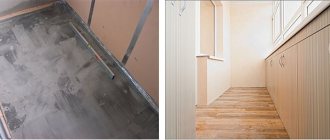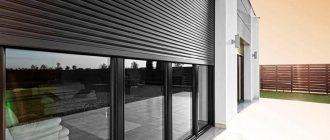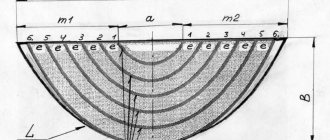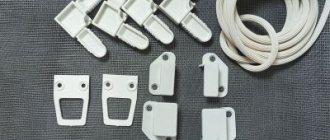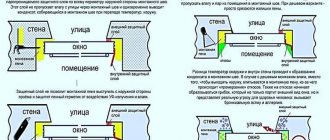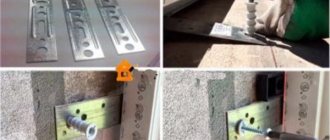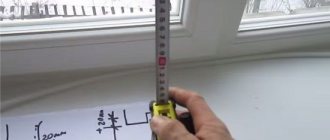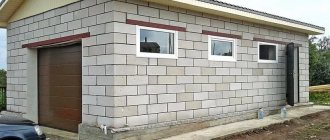Heating a residential premises or office building even at sub-zero temperatures, supplying hot water for public use or heating water in a swimming pool without significant costs for the family budget is possible by installing a solar collector. The key element of such a system is solar panels or vacuum tubes, onto the surface of which the rays of the Sun fall, which are then converted into thermal energy. The efficiency, level of heat loss and overall efficiency of the solar installation depend on what type of solar collector coating is used. Modern types of coating are most often selective. The principle of their operation is to absorb even more solar radiation from the outside, but not to let energy pass out, preventing heat loss as much as possible. There are up to 30 types of selective materials that are applied to the installation both in the factory and independently, at home.
Types of selective coatings
There are three absorber options:
- Paints.
- Chemically treated metal.
- Ready films.
They differ in three respects:
- Absorbency
- Emissivity
- Overall efficiency
Absorption capacity is determined by how much solar radiation a material can convert into thermal energy. She plays a big role, but not the main one.
Emissivity characterizes the amount of heat that the absorber gives off to the environment in the form of radiation. The higher it is, the greater the heat loss and the lower the efficiency of the solar collector.
Overall efficiency is the ratio of the first two indicators. This is a relative coefficient, it does not characterize the actual thermal performance, but shows the effectiveness of the selective coating.
Table of efficiency of selective coatings for solar collectors
How it works
The collector collects energy using a light accumulator or, in other words, a solar receiving panel, which transmits light to an accumulating metal plate, where solar energy is converted into thermal energy. The plate transfers heat to the coolant, which can be either liquid or air. Water is sent through pipes to the consumer. With the help of such a collector you can heat your home, heat water for various household purposes or a swimming pool.
Air collectors are used mainly for heating a room or preheating the air inside it. The savings when using such devices are obvious. Firstly, there is no need to use any fuel, and secondly, electricity consumption is reduced.
Selective paint for solar collectors
Many people believe that it is enough to cover the surface of the collector with black paint - it absorbs solar radiation as much as possible and heats up well. Such a solar panel will be inefficient because:
- Paint absorbs mainly the visible part of the spectrum, the rest of the radiation is not used;
- It emits heat in the infrared spectrum into the atmosphere;
- Most paints fade when exposed to ultraviolet radiation from the sun and lose their ability to absorb radiation;
- At high temperatures, the paint dries out, reducing the efficiency of the absorber several times(!);
- A coating of regular paint acts as thermal insulation, preventing heat from entering the panel.
Therefore, to make your own solar collector, you need to use selective paints specifically designed for this purpose. Their cost depends on:
- Efficiency ratio;
- Heat resistance;
- Service life;
- Brand promotion.
Selective paint for use for both flat and airborne solar collectors.
Sun reflection
We offer a variety of reflective surface materials for solar energy applications. The total solar reflection coefficient of our materials ranges from 85% to 95%. Thanks to the weather-independent MIRO-SUN® nanocomposite layer, our coatings are an ideal material for CPC (compound parabolic concentrator) mirrors with vacuum tube collectors or for concentrators with parabolic grooves (CSP = solar power concentrators).
In addition, MIRO-SUN® can also be used for reflective concentrators in various photovoltaic applications (CPV = concentrator photovoltaics). With a portfolio of very different products, Alanod-Solar offers components that are ideally suited to any application.
Application of MIRO-SUN®
- Vacuum tube collectors (CPC → compound parabolic concentrator)
- Parabolic concentrators for solar power plants (CSP → solar energy concentrators)
- Parabolic microgrooves (CST →solar heat concentrators)
- Photovoltaics (CPV → concentrators for photovoltaics)
- Solar boilers
- Heliostats
Benefits of MIRO-SUN®
- 10 years warranty on material
- Composite nanolayer for independence from weather conditions
- Optimized for maximum solar reflection
- UV resistance
- High temperature resistance
- Convenient cleaning
- Possibility of processing by deformation
- Flexibility
- Does not scratch
- Doesn't peel off
- Environmentally friendly production technology without environmental pollution
- Low energy balance
Self-application of selective paint
The ideal substrate for paint is aluminum or copper. Metal is an excellent conductor of heat and effectively removes it from the absorber and transfers it to the inside of the solar collector panel.
Before painting, copper or aluminum sheets must be polished mechanically and with GOI paste. The less roughness on the surface of a metal, the lower its emissivity - additional roughness increases the area through which heat escapes.
The easiest way to apply paint is to paint with a spray gun. The layer thickness may be uneven and may not meet standards. If the layer is thicker than specified by the manufacturer, the overall absorption coefficient will decrease; if it is thinner, the heat transfer coefficient will increase.
The ideal option is to order painting of metal sheets in a factory that has equipment for painting metal by spraying, galvanic painting or electromagnetic method.
Selective films
An alternative to painting is the use of selective film. It comes in two types - single-layer and multi-layer on a metallized substrate.
The efficiency of the film is high and comparable to selective paints, although the cost per square meter is much higher. High-quality selective films have an emissivity of 5% or less.
A single-layer self-adhesive film is applied to a sheet of metal (copper, zinc, nickel, aluminum). The metal absorber must be pre-prepared in the same way as for applying paint.
The multilayer film is attached with tension to the working surface of the solar panel. The individual strips are soldered together from the inside. When choosing a highly selective film, you must take into account the soldering temperature, and adhere to it during installation. Otherwise, cold bridges will form and the solar collector panel will lose heat.
Multilayer film does not require a substrate or metal absorber for the solar collector.
Selective coating of solar collector with copper
The oxide film on copper is initially black in color and has a good absorption coefficient of solar radiation (see table). To prevent the oxide from disintegrating and turning green, it is protected with a coating with a good absorption-to-emission ratio.
Before starting any work with copper, the absorber sheets must be cleaned. Dilute salt or soda at the rate of 1 teaspoon per 1 liter of water and wash the leaf with a sponge. After all, wash off the remaining solution, preferably with distilled water.
Chemical treatment of copper must be carried out as evenly as possible so that the thickness of the oxide is the same over the area of the absorber.
Important
The solution temperature should be 60-65 degrees. All work should be carried out wearing protective equipment - gloves, goggles and a gas-dust (at least) respirator. Upon contact, the reagents corrode the skin and mucous membranes.
Oxidation of copper with potassium persulfate
Mix until completely dissolved:
- Caustic soda, chemically pure (caustic soda NaOH) – 50-60 grams;
- Potassium persulfate (K2S2O8) – 14-16 grams;
- Water – 1 l.
Blackening of copper coating with ammonium
Mix until completely dissolved:
- Caustic soda, chemically pure (caustic soda NaOH) – 50-60 grams;
- Ammonium persulfate ((NH4)2S2O8) – 14-16 grams;
- Water – 1 l.
Formation of an oxide film by sodium chlorite
Mix until completely dissolved:
- Caustic soda, chemically pure (caustic soda NaOH) – 100 grams;
- Sodium chlorite (NaClO2) – 50-60 grams;
- Water – 1 l.
Kitchen method of oxidation
Add medical grade hydrogen peroxide to a prepared alkaline solution for cleaning sewer pipes (available at any supermarket or plumbing store). The rate of formation of the oxide film depends on the concentration; it must be selected depending on the type of solution for cleaning pipes.
Apply the solution with a sponge or rag to the copper sheet, after the release of oxygen ends, apply again. Repeat until a black oxide film forms.
Heating of metal
You can make a high-quality and durable selective coating with your own hands by heating a copper sheet to 1200 degrees and quickly cooling it in water. Alas, this requires appropriate equipment - uneven heating will not produce a homogeneous film of the same thickness.
Heating has advantages over chemical treatment - the film is formed uniformly and resistant to damage.
other methods
- Liquids for blackening (bluing) copper;
- Treatment with a gas burner (the absorption coefficient is 10-12% lower than with chemical treatment);
- Self-prepared dressings.
If copper is not processed properly, it will acquire this texture soon after blackening, etching, bluing, or other work to form an oxide film.
Zinc coating for solar collectors
Zinc is a good material as a selective surface for solar collectors. There are three ways to process it to achieve maximum absorber efficiency.
Copper plating and oxidation
Zinc sheets must be washed with a solution of 20 g. sodium phosphate and 20 g. soap in 1 liter of water. Preheat the solution to boiling temperature. After degreasing, you can only work with the sheet wearing rubber gloves.
To remove oxides, treat with a solution of 5 g. hydrochloric or sulfuric acid in 100 ml. water. The solution temperature should be 18-24 degrees, processing time – 1 minute. After etching, rinse the sheet with water and dry.
For copper plating, prepare a solution:
- Copper sulfate (CuSO4) – 10 grams;
- Concentrated sulfuric acid (H2SO4) – 10 ml;
- Water – 1 liter.
Treat the sheet with the solution for 2-5 minutes (see the result), then rinse it with water. After the copper plating procedure, the surface can be treated like a regular copper sheet.
Powder paint application
Copier or printer toner can be used as a selective paint for solar collectors. A zinc or galvanized sheet must be heated with a construction hairdryer, and then evenly coated with powder.
The toner is soldered to zinc without losing its matte finish, which ensures good absorption of sunlight. If the powder melts and a glossy surface is formed, it is treated with fine-grained sandpaper.
Printer or copier toner is also used to improve the absorbent properties of zinc.
Galvanization blackening
Zinc can be chemically blackened to increase absorption capacity. Home-made chemicals are ineffective - the resulting selective coating quickly collapses. Analogues are ready-made mixtures and reagents available for free sale.
Solar installations for hot water supply and heating systems
Solar collectors, which are used as a device for heating any liquid (most often water) for the purpose of using it in hot water supply or heating systems, have become very widespread and popular.
Another type of equipment for converting solar energy is batteries, which are fundamentally different from collectors in that they first generate and accumulate electrical energy, and later it can be used for household needs.
But this type of solar energy production and processing requires the purchase of expensive equipment, the main structural units of which are photovoltaic cells, which is not always justified, especially in regions with a small number of sunny days per year.
In contrast, solar collectors for heating water or heating a house have a quick payback, especially if you make them yourself, since in this case the costs will only be the cost of materials, which do not include expensive solar cells.
The use of solar collectors has obvious advantages:
- reduction of heating and water heating costs for the hot water supply system;
- environmental friendliness of this type of energy.
Most often, the use of collectors is justified for use in heating systems of small cottages or for organizing hot water supply in the summer in a country house or dacha. A solar collector for a swimming pool is justified as a device for heating water.
This is explained by the relatively low efficiency of such installations, which can decrease significantly on cloudy days.
Therefore, to optimize heating costs for a private home, it is best to use collectors in conjunction with traditional equipment, which can initially be designed for this, or has the ability to re-equip or coordinate the parallel operation of two heat supply systems.
It is also worth noting that, in addition to regular maintenance and cleaning the surface of the collectors from dirt and debris, some of them are not designed to operate at low temperatures, so before the start of winter they need to be preserved by first draining the coolant from the system.
Main types of solar collectors
A solar collector is a device whose main function is to convert absorbed solar energy into thermal energy for the purpose of its further use for heating the coolant in heating systems, including “warm floors” and domestic hot water supply.
The efficiency of the collector directly depends on two factors: the type of device and its area, so the roof of a building is often chosen for its installation.
Solar collectors can be conditionally classified using different criteria. First of all, they are divided according to the type of coolant into:
- water (liquid);
- air.
According to the level of maximum temperatures, collectors are:
- low temperature – limit up to 50°C, average 35-45°C;
- medium temperature up to 80°C;
- high temperature – more than 80°C.
The latter are most often industrial designs; it is not possible to make them yourself.
Structurally, solar water heaters can be:
- flat, which can be either air or liquid;
- vacuum, using water or another type of liquid as a coolant;
- tubular - there are both liquid and air;
- thermosiphon, or so-called storage integrated collectors, the main difference of which is the ability not only to heat the liquid, but also to maintain its temperature for a certain time.
The last option is the simplest both in terms of design and manufacturing complexity and consists of several thermally insulated containers with water, and the liquid is heated through the glass lids of the tanks.
This type of collector can be considered the easiest to maintain, since in order for it to work, you only need to periodically clean the container lid, but it is impossible to use it in the cold season.
Flat air collectors are also quite simple and look like a special panel in the form of a sealed box with a heat sink with connected air ducts through which the air moves and is heated.
To increase their efficiency, it is necessary to increase their area, for example, through the use of several panels in one system, as well as the use of a fan.

